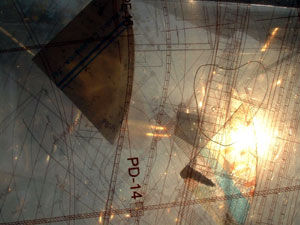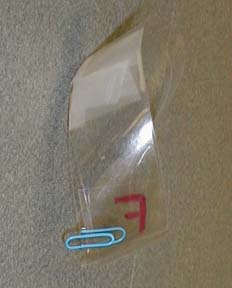
Möbius bands have been studied extensively, mainly in topology. (This journal was previously the Tbilisi Mathematical Journal, published by Tbilisi Center for Mathematical Studie). The correct reference is: Advanced Studies: Euro-Tbilisi Mathematical Journal, Vol. It is hoped that some researchers may find it useful for their experiments. All the properties presented can be extended to 2D materials. Using two theorems (the classification and the uniformisation), most of the GLC properties can be tackled at least at a heuristic level. Such surfaces are the basic tools to understand the GLC network architecture. With this in mind, special attention is paid to the hyperbolic geometry giving birth to triply periodic minimal surfaces. To do this, we present the basic tools of topology and geometry at a ground level for 2D surface, graphene being the best candidate to do this. Properties are understood in a single framework given by topological and geometrical properties. The many models all have compromises: neither all bad nor entirely satisfactory. We review the different models and a physical route (pulsed laser deposition) based on a well controlled annealing of the native 2D/3D amorphous films. Despite the expanded efforts to understand the structure, it remains little known. Glass-like carbon (GLC) is a complex structure with astonishing properties: isotropic sp2 structure, low density and chemical robustness. Our experimental results and theoretical simulations may advance the prospect of creating chiral topologically complex structures via supramolecular approach. Therefore, M- and P-helical Möbius strips could be formed from L- and D-amphiphiles, respectively.

Spectroscopic and morphological analysis indicates that the helicity of the Möbius strips and nano-toroids stems from the molecular chirality of glutamate molecules.

Electron microscopic techniques could clearly identify the formation of Möbius strips when twist numbers on the toroidal fibers are odd ones. Through bending and cyclization of twisted nanofibers self-assembled from chiral glutamate amphiphiles, supramolecular nano-toroids with various twist numbers were obtained. Here we describe a supramolecular strategy of accessing Möbius strip, a fascinating topological object featured with only a single edge and single side. Subsequent photocyclization yields a separable mixture of rigid diastereomeric tris-helicene macrocycles of the above topologies.ĭifferent from molecular level topology, the development of supramolecular topology has been limited due to a lack of reliable synthetic methods. The key step of the synthesis of both Möbius compounds is a Perkin condensation of complementary bifunctional bismaleates leading to a flexible macrocycle containing alternating benzene and biphenyl fragments. The diatropic current is counterbalanced by a paratropic current in the σ system, resulting in no net manifestation of macrocyclic aromaticity. The triple twisted molecule exhibits a strong diatropic ring current in the outer periphery, even though the π system includes 4n electrons.

They are unique in their pronounced band shape and conformational robustness as they are made up of three fully kata-condensed helicene fragments. We now present a single and a triple twisted annulene with fully conjugated peripheries. However, orbital overlap was still severely reduced within the flexible building blocks. Recently, a topological strategy was devised to project the “twist” into “writhe”, thus reducing the strain.
#Triply twistit mobius space full#
540°) that retain a full cyclic conjugation path have been elusive, mainly because of the high strain and loss of orbital overlap. Annulenes with significantly higher twist (e.g. A number of singly (180°) twisted, largely single-stranded and thus conformationally rather fragile, Möbius molecules have been synthesized within the last 15 years, which are aromatic with 4n electrons, thus violating the Hückel rule.


 0 kommentar(er)
0 kommentar(er)
